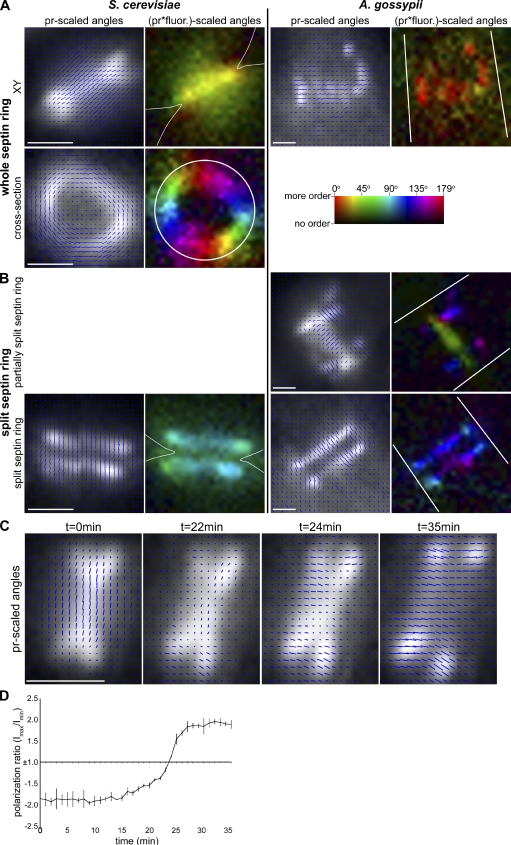Figure 4.
Septin rings in S. cerevisiae and A. gossypii are similarly ordered and accomplish an ∼90° change in orientation without concerted rotation. (A) Septin rings assembled in S. cerevisiae and A. gossypii expressing Cdc12-conGFP4 exhibit septins organized such that, on average, GFP dipoles are oriented perpendicular to the cell growth axis. As in A. gossypii (Fig. 3C), the S. cerevisiae septin hourglass, when viewed in cross section, also has the average GFP dipole position oriented parallel to the cell cortex, and perpendicular to the growth axis. Cell outlines are shown in white. Bars, 1 µm. (B) Split septin rings show an ∼90° change in the orientation of the GFP dipoles. Some septin rings in A. gossypii expressing Cdc12-conGFP4 were captured in a partially split state, exhibiting the original (perpendicular) and reorganized (parallel) orientation of dipoles. (C) Septin rings in S. cerevisiae expressing Cdc12-conGFP4 were imaged using every minute, through the transition from the hourglass to a split ring. (D) Polarization ratio of the central region (12 pixels) of S. cerevisiae septin rings as they progressed through the septin reorganization were analyzed and plotted. Average orientations perpendicular to the ring axis are plotted as negative values and average orientations parallel to the mother–bud axis are plotted as positive values to represent the difference in orientation seen through time. n = 3; error bars are standard deviation.

